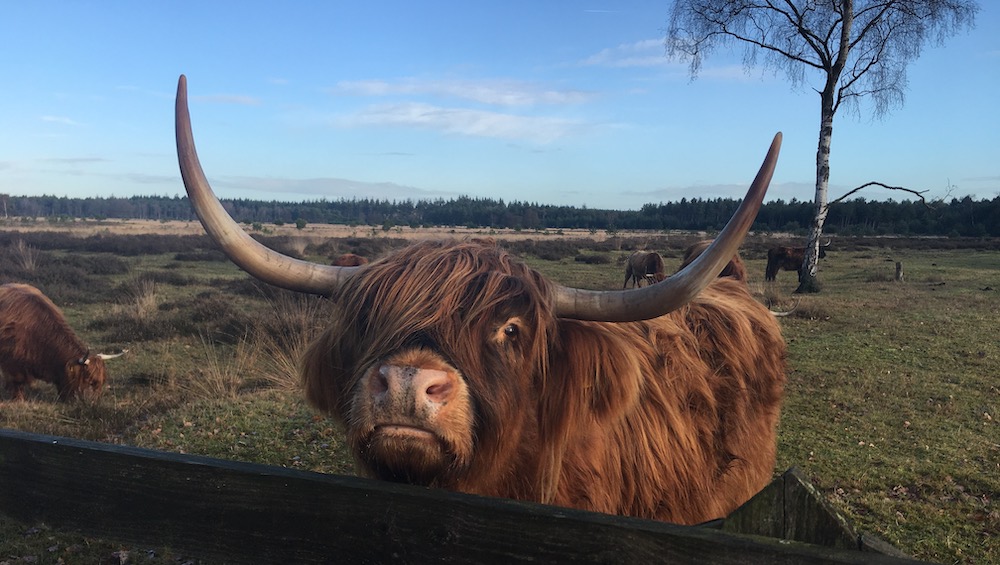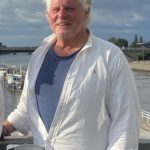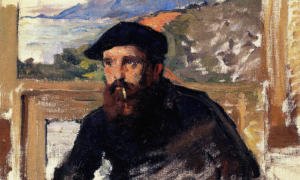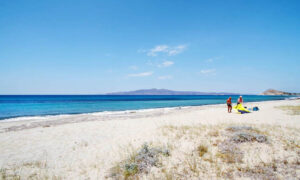(Editor’s note: The Benelux is the next stop for our Staycation series as the pandemic restrictions limit travel options in some European countries. You can Dispatches’ see other staycation posts here. But check local rules before your cross borders. They’re changing daily.)
From the perspective of an American expat in the Netherlands, one of the biggest differences between living in the United States and in Europe is the lack of wilderness here. If you go to the Rocky Mountains and Western states such as Montana and Wyoming, you can go days without seeing another human. Just elk, grizzly bears and bison. You can camp anywhere on federal land amid the mountain splendor.
In my native Kentucky, the state largely is empty outside the major cities and towns, and there are a massive number of giant lakes and multiple national parks such as Red River Gorge to get lost in.
Here, even in the remote parts of the Alps, Carl Cox is DJing some EDM concert at the base of Mont Blanc, or was until the pandemic. The only countries with true wilderness are Romania and Bulgaria in the east and Norway, Sweden and Finland.
But if you know where to look, you can still find adventure here in the underrated Benelux – Belgium, Netherlands and Luxembourg – and outdoor staycation destinations to escape the pandemic.
Here are some of our favorites.

Netherlands
Wide open spaces
When the pandemic started back in March, the Netherlands quickly went into its “intelligent lockdown,” which was pretty much no lockdown at all. In fact, our hamlet of Leenderstrijp – population 500 – started filling up with people escaping the city to the forests and heaths that surround us.
Back in 2016, we discovered that while the Netherlands is the most densely populated country (actual country, not city-states like Monaco) in continental Europe, it still has a lot of open spaces, including on the edge of what was then our new neighborhood just south of Eindhoven. We discovered to our delight that includes the large natural areas of the Leenderbos (the woods of Leende) and the Groote Heide (the big heath.)
• The Leenderbos/Groote Heide, which has miles of paved biking trails as well as miles of off-road bike trails. There are huge open fields and heaths populated by friendly Scottish Highland cattle and lots of forest hikes. As in most of Europe, the forests are mostly commercial efforts – pines planted after World War II. But there are still a few sections of old-growth forest that are hundreds of years old.
Where to stay:
There’s a network of Dorpswoning vacation homes in Leende, and the ones we’ve been in are super nice. The trouble is, they stay rented year–round. And they’re expensive, starting at about 300 euros for a mid-week stay depending on season.
Our forests and heaths are a tiny percentage of protected lands in the Netherlands.
About 10 percent of the Netherlands is forest. There are more than a million hectares of wetlands, including marshland, fens, peat bogs and lakes, according to the government websites on protected areas. They include the Waddenzee, the IJsselmeer region and the Biesbosch wetland.
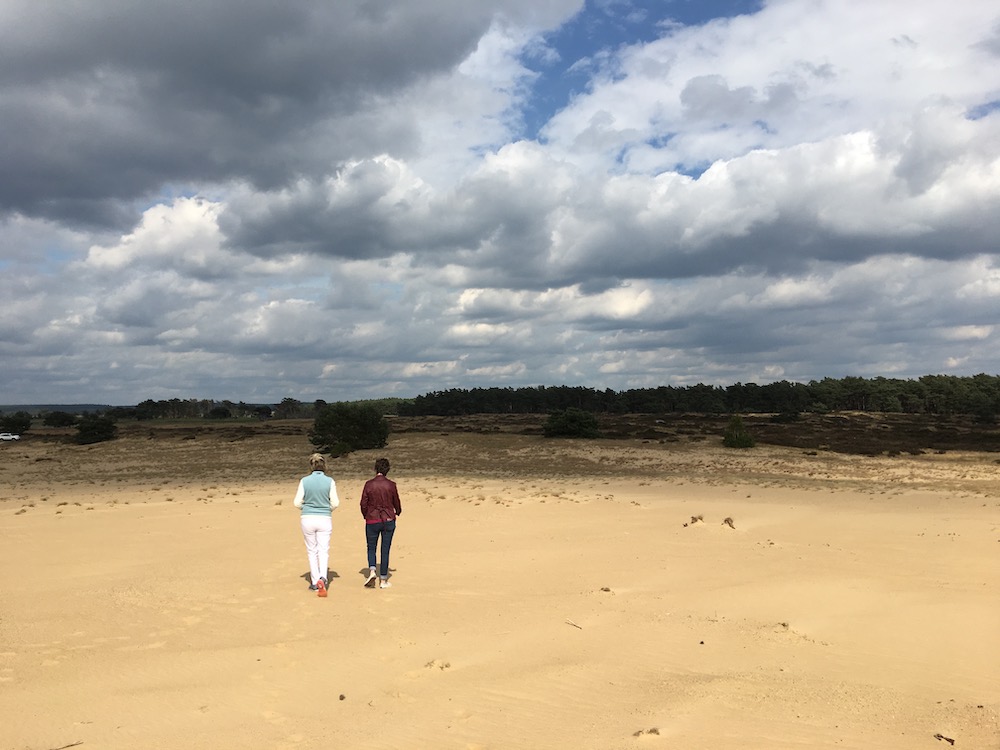
• National Park de Hoge Veluwe just north of Arnhem. The Kröller-Müller Museum is on this property, but we’d skip the museum – as fabulous as it is – because going to a museum in a pandemic is no fun. We learned that the hard way in Den Haag at the Mauritshuis.
Hoge Veluwe has 55 square kilometers of endless sand dunes, heath, forest and wildlife roaming free on one of the largest parcels of open land in the Netherlands. This is one of the few places where we’ve seen wild boar out in the open and way too close to visitors. (We stayed in our car, thank you very much.) This is yet another great place in the Netherlands to explore by bike or hike.
• The Kalmthoutse Border Park on the Netherlands/Belgium border is 60 square kilometers (about 15,000 acres) of heath and dunes. And, of course, there are bike paths and hiking trails.
The seashore
The Netherlands has about 1,000 kilometers of seashore from Het Zwindorp on the south to Eemshaven on the north. We often go to Den Haag, where you can take a tram from the Old City out to the beach.
Den Haag has two distinct beach experiences. Just north of the Old Town is Scheveningen, a collection of hotels, boardwalks, Caribbean-themed beach restaurants and casinos that stretches for miles. It might be the most commercial stretch of sand in Europe outside of La Grande-Mott on the edge of Montpellier, France.
But just north and south of the commercial beach are less developed spans of unspoiled dunes including the Oostduinpark.
• Friesland, the islands in the far north of the Netherlands have some charming towns, but visitors go for the miles of unspoiled beaches.
From Jackie Harding’s October post on Terschelling:
With 30 kilometers of beaches and more than 70 kilometers of cycle paths, you are spoiled for choice on the island. Whether it is cycling or hiking along the Waddendijk or through the restful inland forests, along the North Sea coast, salt marshes, Noordsvaader or the Boschplaat nature reservation. You can also take a “fat bike” (thick, wide tires) 3-hour tour on the beaches, with a local tour guide who will fill your tour with local stories and information. A good level of fitness required!
There are lots of hotels, B&B’s, vacation rentals, caravan and camping sites on the island, and most are open in the off-season. Jackie stayed at the Hotel Bornholm, just outside West Terschelling. All activities mentioned and more can be found at the Terschelling Tourist Information store at the harbor or here on the website.
• Boschplaat Nature Reservation
This large area in the east of the island has been a reservation since 1970 and boasts immense sand dunes, rare plants and a surfeit of sea birds. The beaches provide solitary wanders, with the sea and birdlife the only sounds you hear.
The “Drenkelingenhuisje” is a beach house on stilts that used to provide shelter to anyone shipwrecked. If you are lucky, you will see some seals sunbathing on the sand. As it is so remote, it is also a “Dark Sky” park, providing pristine skies to stare in wonder at the stars.
You can also take a covered wagon tour of 2.5 hours whilst the coachmen islanders tell you the history of the island.
Belgium
If you’ve just got to have some hills, head over the border (if it’s open) to Belgium, which has a surprising amount of forested mini-mountains in the Ardennes.
Our daughter Lale just got back from Malmedy, and that area is a major outdoor destination. Lale is NOT an outdoors person, but she and her friends from college decided they needed to get out into nature for some camping, which she says was really fun.
Her Belgium adventure initiation was a 2016 outing with her international school that included caving (she’s claustrophobic) and rock climbing (she’s not crazy about heights). If you dig all those things, you’ll love the Ardennes.
There are 66 rock climbing destinations in Belgium, and most are along the Ourthe River near Hotton. There’s also lots of camping in Hotton starting at about 10 euros for a place to pitch your tent.
Note: You have to belong to a club to access most of the best rock-climbing walls, which are on private property.
There’s also kayaking and whitewater rafting. Just call to make sure operations are open as we get further into fall and winter.
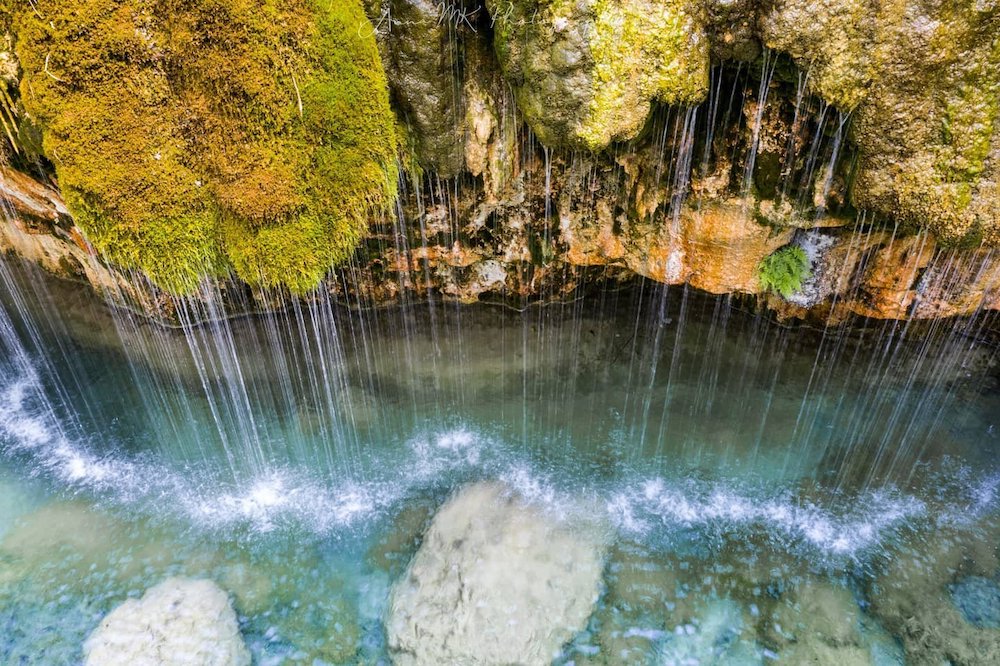
Luxembourg
We used to live 45 minutes from Luxembourg City, and we always took guests to Luxembourg for castles and picnics in farmers’ fields.
This landlocked country has lots of banks and financial firms, but no mountains, beaches or wilderness. It does have a really nice outdoor offering called Little Switzerland if you don’t have time to go to the real thing.
Little Switzerland, which is officially the Mullerthal Region, is a big valley with hiking trails past rock formations and tiny waterfalls and through lush meadows and forests. It really is like a tiny slice of Switzerland transplanted to this crazy wealthy duchy.
Once the pandemic is over, we can also recommend chic and sleek Luxembourg City, Vianden Castle and all the (really expensive) cafés and restaurants in Echternacht.
So there you go … a dozen ideas within a couple of hours’ drive of most expat centers. And don’t forget – while forest bathing isn’t known to cure COVID, it can cure the lockdown blues.
Co-CEO of Dispatches Europe. A former military reporter, I'm a serial expat who has lived in France, Turkey, Germany and the Netherlands.


